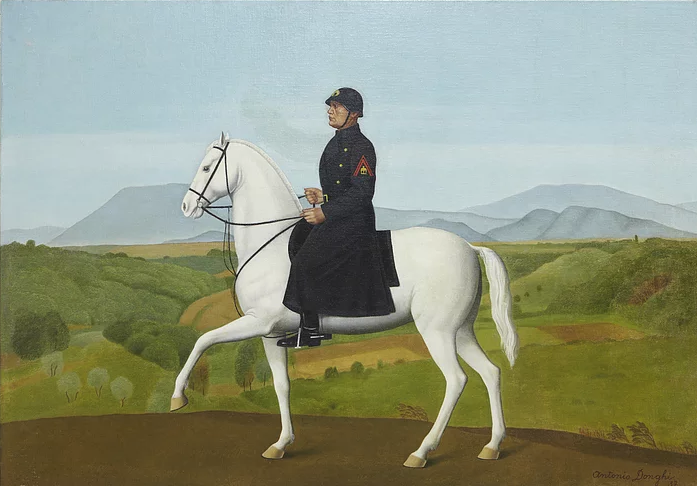As for the scenes he painted, they often were quirky. In some cases there was a hint of humor, but humor from an odd, sometimes hard to understand viewpoint.
His English Wikipedia entry is here. From there you might link to a longer Italian entry.
Carnevale - 1923
Juggler - 1926
The harlequin in the previous image reappears here.
Circo equestre - 1927
Paesaggio (porto) - 1930
Example of a landscape painting where Donghi uses a different style.
Abito azzurro - 1933
The title refers to her blue outfit, yet it's hard to avoid noticing the gloved hand.
Equestrian Portrait of Mussolini - 1937
Just by looking at this painting it's hard to say whether Donghi made a typical work honoring Mussolini or whether this was a subtle satire of such works. I suspect the latter.
Autoritratto - 1943
Self-portrait.
Ragazzi alla finestra - 1947
"Children at the Window" -- a postwar work.
Cocottina - 1927
This and the next two paintings as seen via my iPhone in Venice's Ca' Pesaro museum.
Donna al caffè - 1931
Gli amanti alla stazione (La partenza) - 1933
"The Parting" is the short title for this couple at a train station.











No comments:
Post a Comment